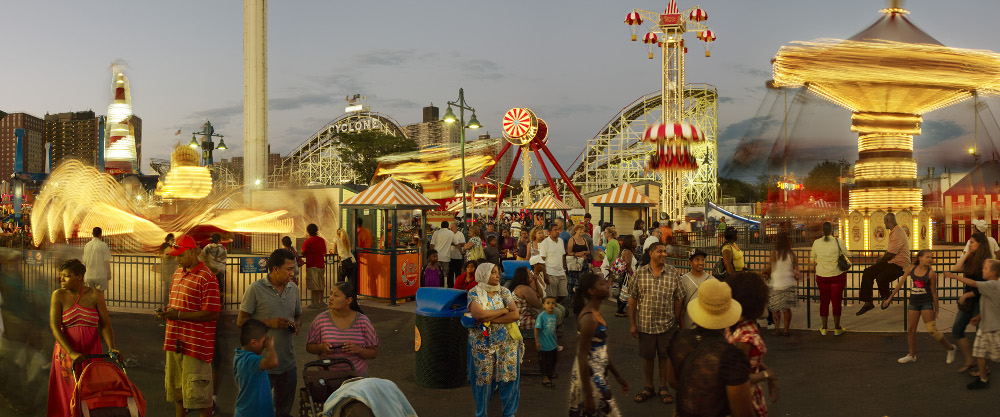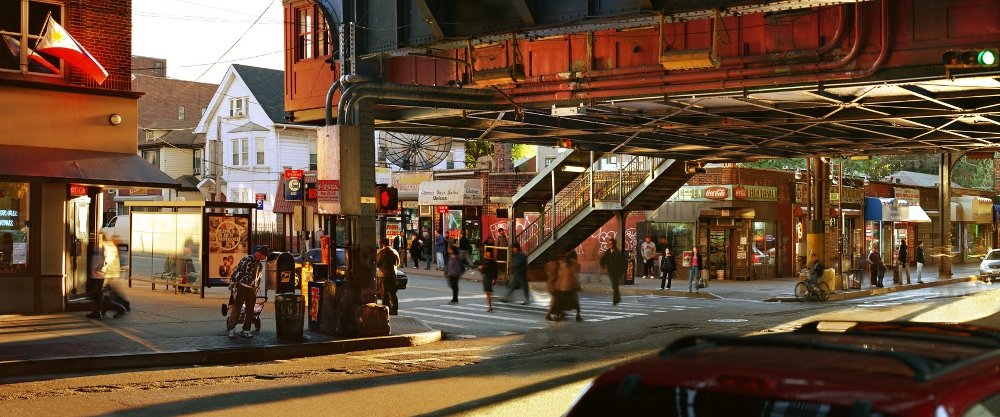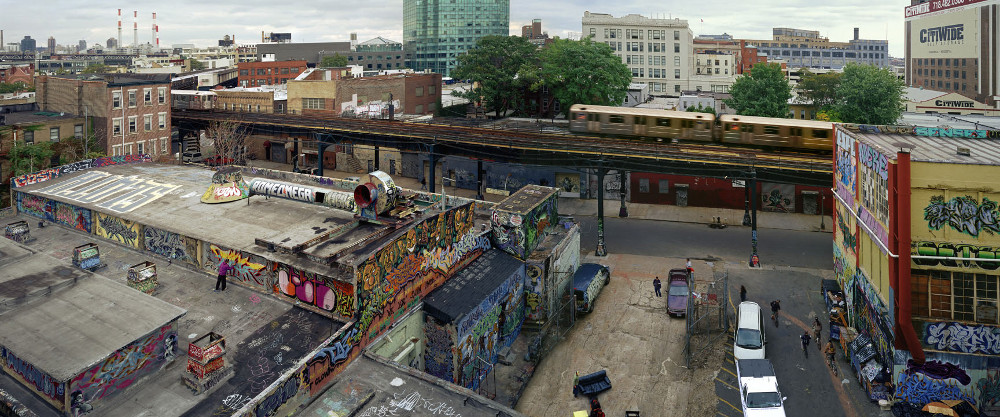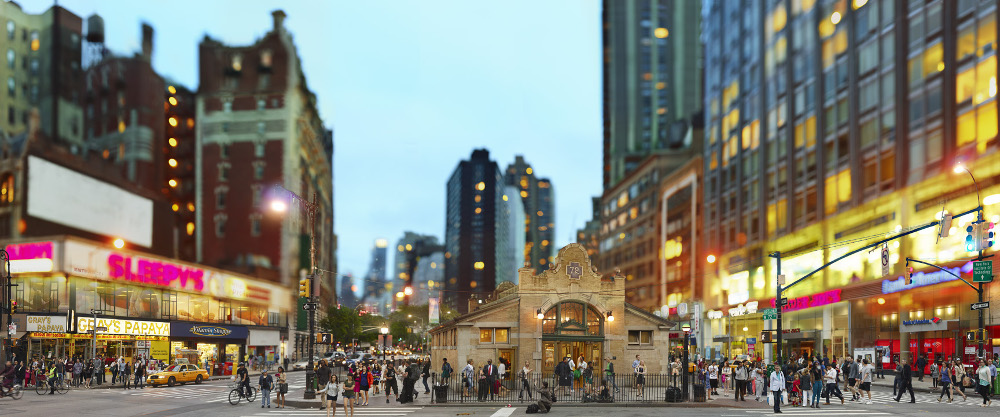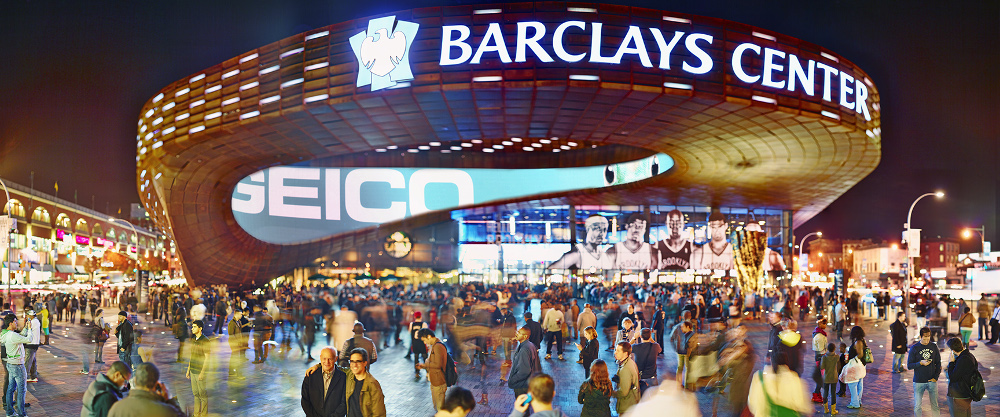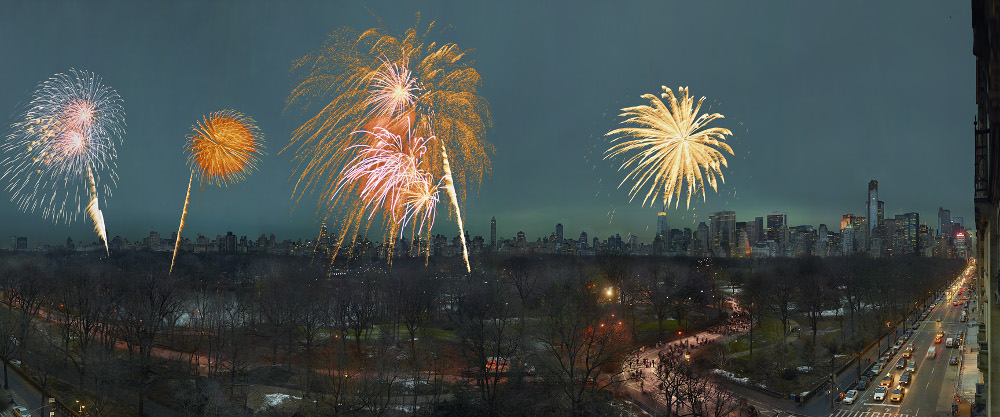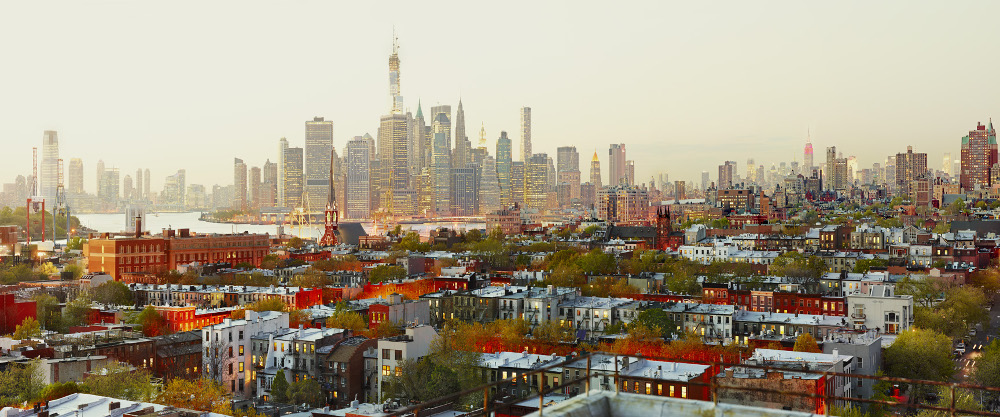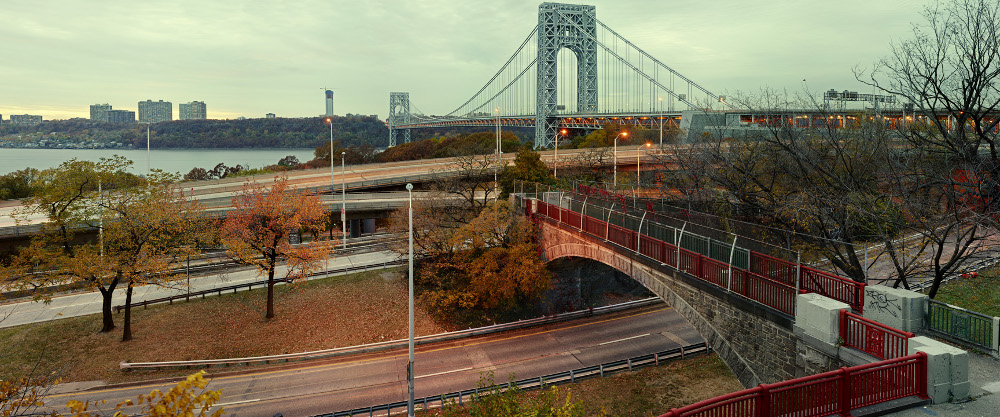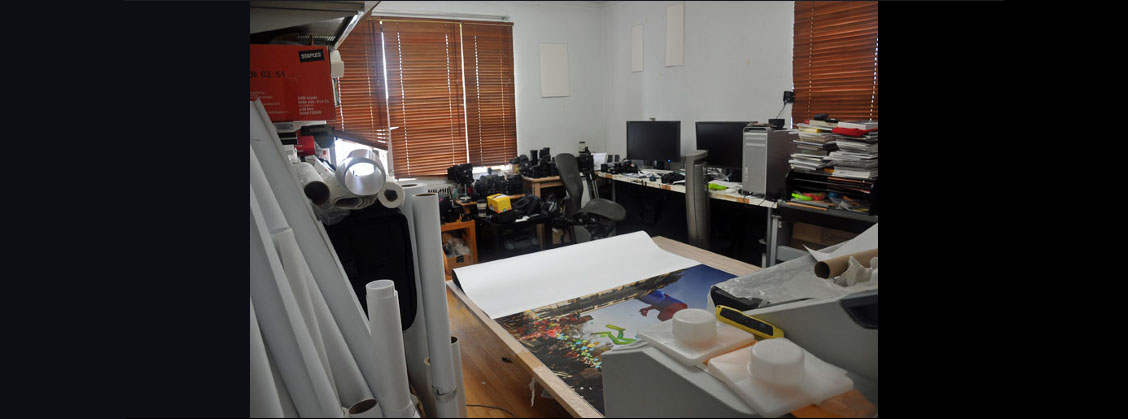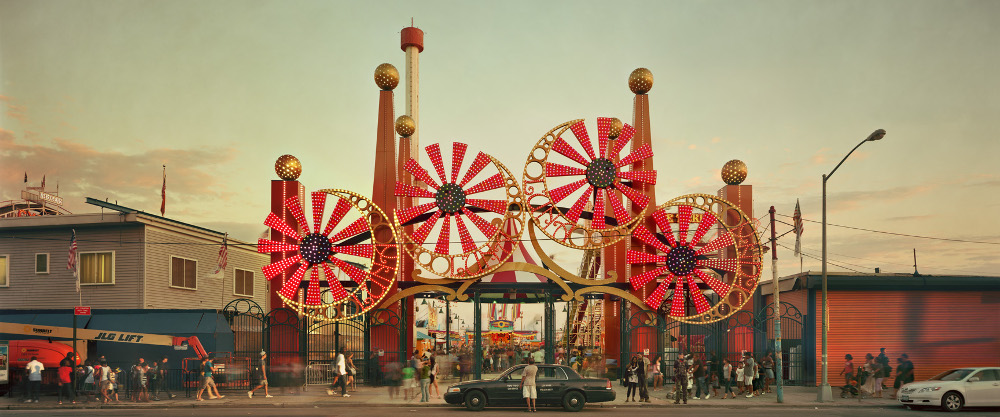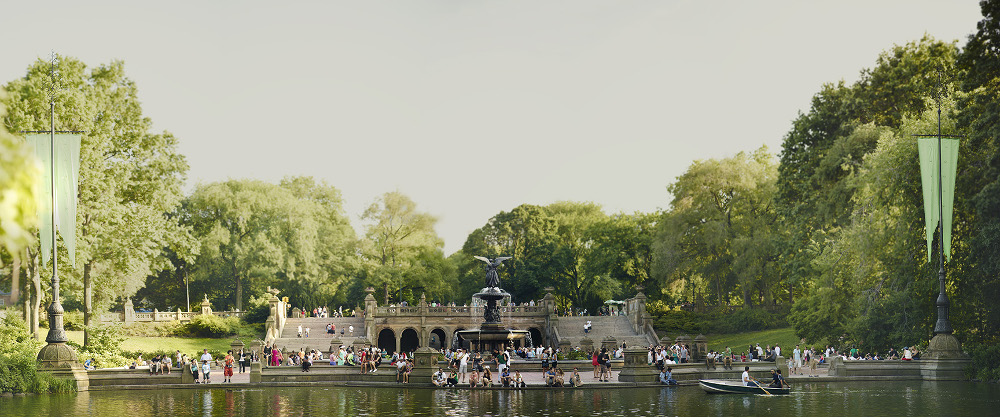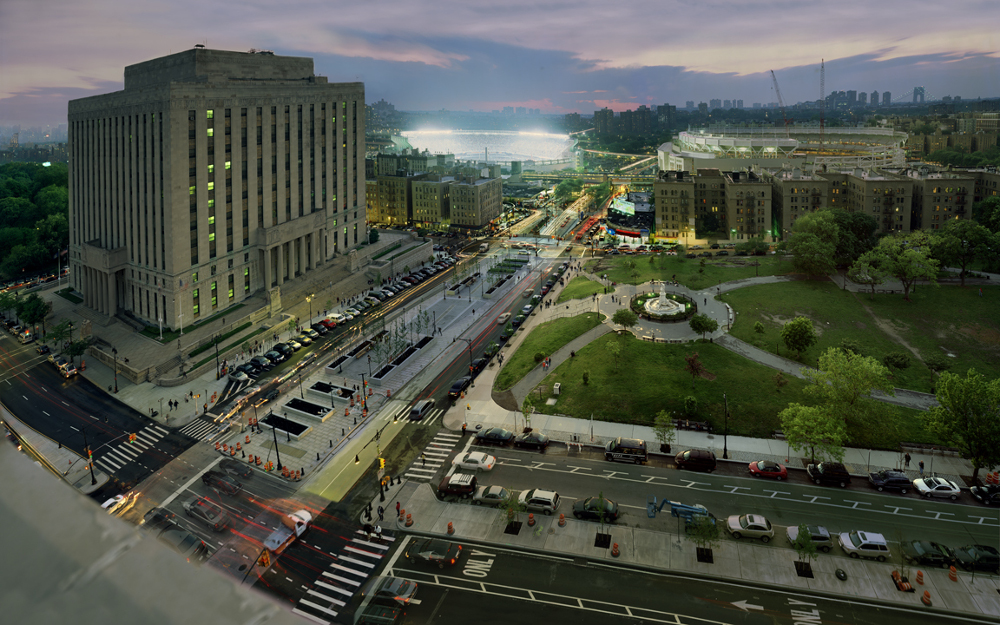By Roslyn Bernstein
Jeff Liao’s studio, a small and neatly organized one bedroom apartment in a pre-war Jackson Heights coop building, is hardly a place where one would expect to find such a panoramic vision. A 64-inch printer that just about fills the modest bedroom; on the periphery are several large screen Mac computers, the tools of his trade.
Liao’s recent body of work focuses on New York City, and looking at the images one might assume the artist is a born-and-raised New Yorker. In fact Liao was born in Taiwan and grew up speaking Mandarin; when he moved to Vancouver for the second half of high school, he was 17 and did not know any English.
“The great thing about Pratt,” Liao said, is that they don’t push you to do anything. It’s the Bauhaus system. You draw first. Then, you learn color and design. All of this before you study photography.”
Although both of his parents were educators, Liao didn’t like school as a kid. While in high school in Vancouver, Liao was thinking of a more practical career than art, an interior designer. Liao did not pick up his first camera, a Nikon FM2 that shot 4 x 5s, until he joined a camera club in Vancouver. This was the beginning of an involvement with photography that would include experiments in the many formats and technologies available to the form.
With acceptances from the San Francisco Art Institute, Rochester Institute of Technology, and Pratt, Liao made the decision to come to New York City in 1999, entering Pratt as a photography major. It was a life-transforming choice. “The great thing about Pratt,” Liao said, is that they don’t push you to do anything. It’s the Bauhaus system. You draw first. Then, you learn color and design. All of this before you study photography.”
When Pratt alumna Lois Conner came to campus to talk about her China book, images shot with a 7 by 17 format camera, Liao was struck by their power and their size. “I spoke English to her and asked her a question “How did you carry a 40-pound camera on your back?” To his surprise, Conner answered him in Mandarin, “I have a very healthy body,” she said. After the encounter, Liao asked himself: Why not use the biggest camera possible? Why not
use the best quality large format camera?
“I realized that cities are my stage,” he said. “I could pick and choose moments that I wanted to join together—somewhat like a painter.”
The result was Habitat 7 and Coney Island, where Liao shot almost 40 frames of a single image every day. Liao points to a panoramic shot of the entrance to Luna Park, a striking image from the Coney Island project. The image was shot in film, then scanned. Then, using Photoshop, he put together the elements that matter to him by digitally editing the negatives: the couple looking directly into his camera, the lone cab driver, standing outside, waiting for a fare. On the right, one can see afternoon light, apparent from the shadows. Whether he uses a film or digital camera depends on the project and the subject matter. For the second half of the Coney Island series, Liao switched to a digital camera.
Even before Photoshop, when one printed in the old way, one dodged and burned and added grain, altering the sense of the image.
Over time, Liao began to think of his work in a new way. “I realized that cities are my stage,” he said. “I could pick and choose moments that I wanted to join together—somewhat like a painter.” Although Liao’s panoramic images look like a documentary, in fact nothing is true. Liao wants the images to make sense to the viewer, but they are really composites. He shoots many frames of the same scene, at different times of day, so that the light varies considerably in the final panoramic image. Liao loves picturing all the moments and compressing the time. The goal, he said, “is to create the atmosphere of a place.”
Many years ago, when he was an intern at Magnum Photos, Liao used to study the documentary work. But even then, he says, nothing was true in photos. Even before Photoshop, when one printed in the old way, one dodged and burned and added grain, altering the sense of the image. “Some facts are not other people’s truth!” Liao said. “People look at images and they just believe. The brain does this.”
For an image of the Spiderman and Kermit balloons from the Macy’s Thanksgiving Day Parade, Liao shot 32 frames. The trick was to create a seamless work through the proper alignment of the parts. The two balloons never actually appeared together at the parade. “Photoshop is smart but not that smart,” he said. Liao manipulates the harshness and softness of his images, playing with the selective focus. Since digital cameras are faster, he often uses digital when he is shooting people.
Working from multiple perspectives takes time. Liao shot 2,000 frames for one block on 42nd Street, from 7th Avenue to 8th Avenue. He spent five hours each at 30 different locations. After that, he spent two months working in Photoshop to produce the final image. Most often, Liao shoots one picture a day and ends up using some 90 percent of the pictures he has taken.
Liao scouts out the site beforehand at least three times, trying to figure out when people are there, when the sky is dark, and when lights are turned on in buildings. When he shot the Grand Concourse in the Bronx, a commission from the Bronx Museum of the Arts, he often traveled uptown to walk the streets and eat the food. Once, when he was shooting buildings at sunset with his tripod set up, a cop stopped him. Liao thought he was about to tell him that he needed a permit but the exchange went otherwise: “Do you know it’s not safe to shoot now?” the cop advised him. “I told him that I was OK. I’m street smart,” Liao boasted, “If it doesn’t feel right, I leave.”
Recently, Liao has been doing research about colonialism and post-colonialism because he now wants to turn his lens on the world, especially on Asia.
Liao has been shooting New York City for almost ten years now and he sees the “New York: Assembled Realities” exhibit, with more than 40 works and a video illustrating his technique, as well as the accompanying Aperture book (he wanted to name it Five Boroughs instead of New York but the editors vetoed the title) as the culmination of this work. The word “assembled,” came from the exhibit’s curator Sean Corcoran. Liao thinks it is the perfect choice: All my images are a construct, stitched in parts,” he said.
“It’s hard to stop photographing New York,” he explained, because there is always something to photograph here, whether it is Occupy Wall Street or some other political event. When New York Magazine came to him to shoot a cover panorama of New York City, it was impossible to say no. “People come to me for my look,” Liao said, “a cityscape with panoramas. Call Jeff, they say. It’s funny, calling a Chinese man to shoot New York City.”
Recently, Liao has been doing research about colonialism and post-colonialism because he now wants to turn his lens on the world, especially on Asia. His idea to shoot the same subject in different cities: “Some very French building in Vietnam; some iconic Taiwanese image in Japan; and something Portuguese in Brazil. My idea is to confuse buildings from two places and make one scene,” he said.
New York and Asia. Both worlds inspire Liao, and both worlds hang on his living room walls: the entrance to Luna Park in Coney Island, brightly-colored and glowing with lights on one side and, opposite it, a page of exquisite calligraphy, black ink on paper, done by his 70-year-old father, who recently retired. “I told him that he should do this now,” said Liao. Having established himself as NYC’s premier panorama photographer, Liao now dreams of returning to Asia to turn his lens on the night markets there, to stitch together other realities.
“New York: Assembled Realities” is at the Museum of the City of New York from October 15, 2014 through February 15, 2015.
Roslyn Bernstein reports on arts and culture for such online publications as Tablet, Huffington Post, and Guernica. Bernstein is a professor of journalism at Baruch College, CUNY and the CUNY Graduate School of Journalism. She is the author of Boardwalk Stories and the co-author of Illegal Living: 80 Wooster Street and the Evolution of SoHo.
